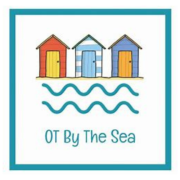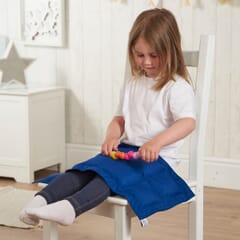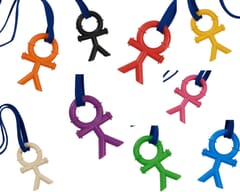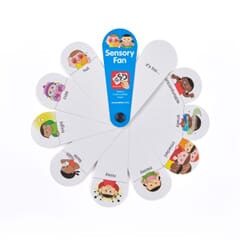Get exclusive deals you won't find anywhere else straight to your inbox.
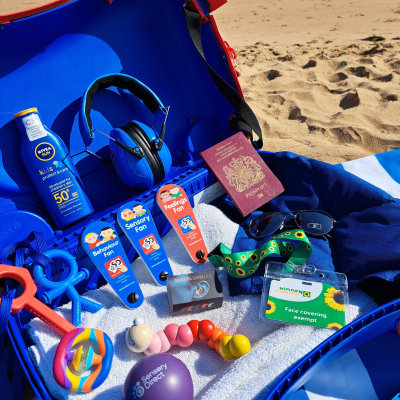
Travelling With Children With Additional Needs
We're really excited to have a guest blog this month - Tips for Travelling with Children with Additional Needs. We've worked with Hannah Jewell on a few projects, and her personal and professional advice has been really insightful.
Tips for Travelling with Children with Additional Needs
Hi, I’m Hannah, a third year occupational therapy student, founder of @ot.by.the.sea and, most importantly, a mum of two children with additional needs. My eldest has a diagnosis of Autism, ADD, sensory processing difficulties, and also has a language disorder. My youngest has an autism diagnosis and sensory processing difficulties. Through lived experience, I completely understand the trials and tribulations of day-to-day life with children that need more support. I know all too well that this can be even more of a challenge when you factor in a new routine or environment.
With the summer holidays fast approaching, I hope that I can help other families to prepare for upcoming trips in the UK or abroad, by sharing some of my tips to alleviate the impact of the changing environment and routines. I recently travelled to Florida with my two children, and after worrying how they would manage a long-haul flight and all of the sensory challenges I knew it would bring, I took some time to research ways to help ease the process for all of us. I can honestly say that putting some extra measures in place and ensuring we were armed with strategies and resources to support them, made a huge difference to the quality of our whole experience.
Preparing for your holiday
If you are flying to your holiday destination, I recommend researching the airport and finding out what facilities are on offer. For example, Gatwick Airport has a sensory room which is available to pre book online. Booking is free, and you can select a time slot to suit you. Holiday providers can also be extremely helpful with their special assistance service, which often includes a fast track through security and extra baggage allowance to allow for special equipment and items such as weighted blankets. It is worth the time to call your holiday operator in advance and discuss any options they can provide you with.
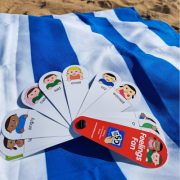 A tool I found especially useful before and during the holiday was the Feelings Fan from Sensory Direct. It is a simple way for children to express their emotions using key words and symbols. It is compact to fit in hand luggage, and doubles up as a discreet way for your children to share difficult emotions in a busy environment. Planning is everything when it comes to preparing neurodiverse children for a big change in routine. I found it helpful to use a website called Widgit to help me prepare visual supports such as timetables and social stories to manage expectations of each day and reduce anxiety. We also spent time, in the lead up to the holiday, watching YouTube videos of the airport, hotel and activities, so that both children knew what to expect at each stage of the holiday.
A tool I found especially useful before and during the holiday was the Feelings Fan from Sensory Direct. It is a simple way for children to express their emotions using key words and symbols. It is compact to fit in hand luggage, and doubles up as a discreet way for your children to share difficult emotions in a busy environment. Planning is everything when it comes to preparing neurodiverse children for a big change in routine. I found it helpful to use a website called Widgit to help me prepare visual supports such as timetables and social stories to manage expectations of each day and reduce anxiety. We also spent time, in the lead up to the holiday, watching YouTube videos of the airport, hotel and activities, so that both children knew what to expect at each stage of the holiday.
Sensory Direct Products
We stock a range of visual and communication aids that are great for holiday preparation. Use our colourful symbols to create your own routine to help explain what to expect. Our wipe clean communication fans are a great way to help express feelings and emotions, and are robust enough for use when out and about.
At the airport
By the time you arrive at the airport, you will already have arranged faster security and access to the sensory room if needed. Most airports recognise the sunflower lanyard to represent hidden disabilities. If your child does not like to wear a lanyard, badges are
available, or it is perfectly acceptable for the parent to wear it instead.
Remember: You can keep hold of your child’s pram until you board the plane. We have a Maclaren Major Elite which is a fantastic special needs pushchair, and we bought a tag from Etsy, to request that it is treated as a wheelchair. Although these tags aren’t official, we did find that it was respected and we were allowed to access more areas than we could have done without it, so it was definitely a useful purchase.
For the plane journey itself, we ensured our carry on case was packed with useful sensory items to reduce anxiety on the flight. These included the following items from Sensory Direct.
Weighted Lap Pad – These are designed to apply a calming, deep pressure to the lap and upper legs whilst the children are sitting down. They can reduce excessive fidgeting and I really liked that the size of these is portable as opposed to taking a
large weighted blanket on the plane.
Essential Holiday Sensory Grab Bag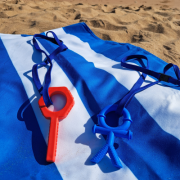 – this is a fantastic pack that includes fidgets, chews and ear defenders. Both of my children made use of these throughout the flight and I definitely saw a reduction in my daughter’s anxiety because of this. I also made sure I packed spare power banks for devices. They are an easy thing to forget but they are great in an emergency. We all know that gadgets are our secret weapon when it comes to keeping meltdowns at bay!
– this is a fantastic pack that includes fidgets, chews and ear defenders. Both of my children made use of these throughout the flight and I definitely saw a reduction in my daughter’s anxiety because of this. I also made sure I packed spare power banks for devices. They are an easy thing to forget but they are great in an emergency. We all know that gadgets are our secret weapon when it comes to keeping meltdowns at bay!
Sensory Direct Products
Weighted Lap Pads are great for travelling, but did you know we also make weighted shoulder wraps and neck wraps? Designed to apply calming deep pressure to the shoulders and neck, they help reduce anxiety and stress. Great for travelling! Our weighted neck wraps also come with a handy loop which you can attach a sensory chew or fidget toy.
During your stay
For my youngest, I decided to pack his own pillow case and favourite teddies from home. This helped him to settle at night after a busy day. I also packed familiar snacks – actually I packed TWO WEEKS WORTH OF SNACKS! But I didn’t regret it. The change in food would be enough to unsettle him completely. The bonus is that once they were eaten, we had plenty of space to bring home souveniers! Win-win!
Each day, we revisited our visual timetables and looked at images of where we were going that day. We had to remind ourselves not to over fill our days and to listen to when the children had had enough. This meant leaving early if we needed to.
Top tip - Pack a copy of DLA and diagnosis letter so that you are able to purchase carers tickets for your days out. It is also a good idea to buy a Radar key to access the disabled toilets if this is something that you will find helpful.
I hope that you find some useful ideas within this blog post. I think that overall, the most important thing is to prepare well, but arrive with a “Go with the flow” attitude and acknowledge that you won’t be able to do everything, that it might be tricky at times and
most importantly to be kind to yourself and allow for hiccups along the way.
Sensory Direct Products
If you're child loves a weighted blanket, did you know that we also sell smaller, portable blankets? Our midi weighted blankets are a perfect portable alternative to our larger weighted blankets, great for travelling or on the sofa.
We also make weighted lap pads, shoulder wraps and weighted blankets in a wipe clean material. Great for on the spot cleaning on holiday or when out and about.
I hope you have a wonderful summer making precious memories!
Hannah x


